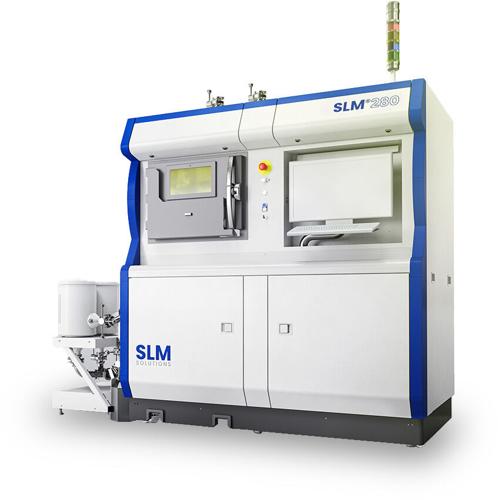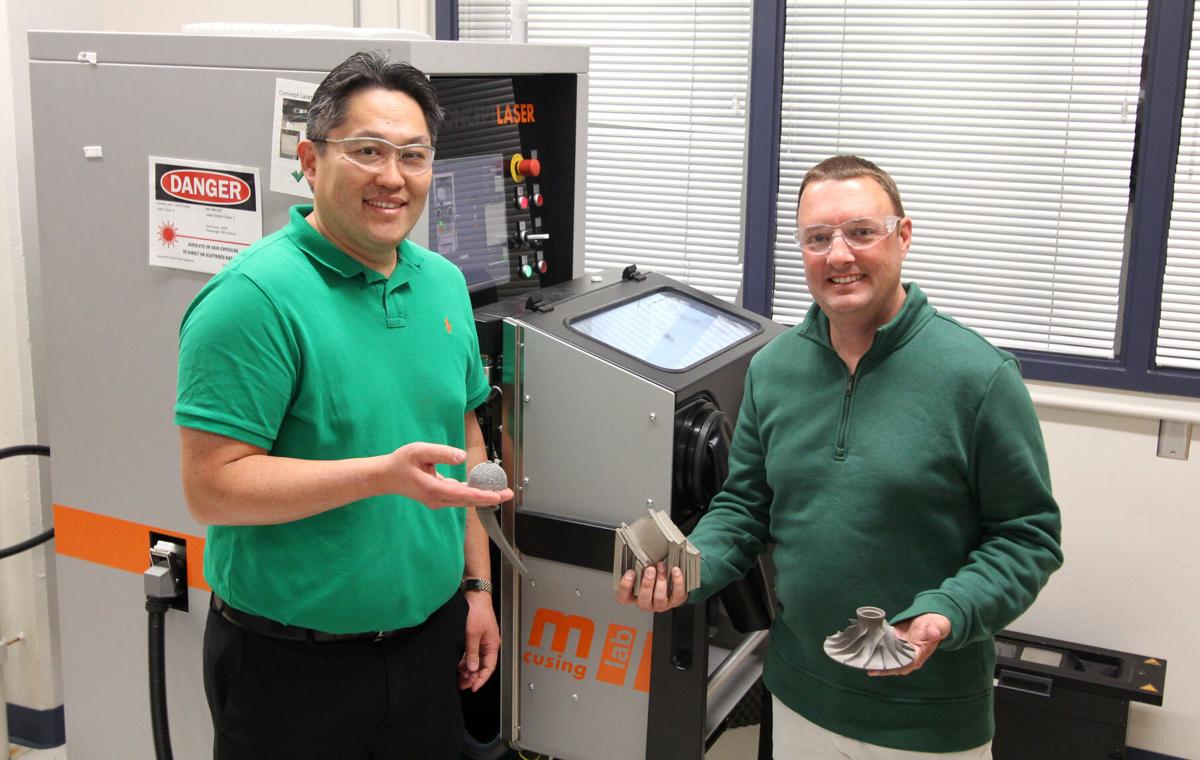Can 3D printers produce parts that can withstand the high heat and stress of hypersonic flight?
Two University of Arizona scientists think so and are developing new 3D-printed materials for hypersonic air vehicles like missiles under a new $1.2 million Navy grant.
Andrew Wessman, UA assistant professor of materials science and engineering, and Sammy Tin, head of the Department of Materials Science and Engineering, were awarded the grant from the Office of Naval Research’s Defense University Research Instrumentation Program to fund new equipment to support their work.
The pair are developing new metal alloys to 3D-print parts that can withstand the stress of traveling at hypersonic speeds — five times the speed of sound and faster.
Their Navy grant is just the latest funding award for the UA’s growing programs in hypersonic technologies as the Pentagon and contractors, including Tucson-based Raytheon Missiles & Defense, scramble to catch up with Russia and China on the development of hypersonic missiles.
3D printing, a type of “additive manufacturing” that creates objects by building up thin layers of material, offers much more design flexibility than traditional manufacturing by allowing people to create precise geometries that aren’t otherwise possible.
That opens up new possibilities for the field of hypersonic flight, such as incorporating cooling pipes directly into the structure of a vehicle, the UA scientists say.
To additively manufacture something, scientists or engineers make a material into a powder and print a design by melting the powder one layer at a time.
Traditional manufacturing processes like forging are effective for simple shapes, but using the same material for 3D printing isn’t ideal, Wessman said.
“In forging, for example, you take a chunk of metal, you heat it up and you squish it into the shape you want,” he said. “If you try to take that same material, you can make it into a powder and then print with it. And it prints OK, but it’s not really optimal.”
Most metal additive manufacturing now uses metal alloys that were originally developed for traditional manufacturing processes, like an alloy of nickel, chrome and iron used for forging strong parts since the 1950s.

A German-made 3D printer with two 700W lasers that would be purchased with grant funding.
But the same material processed via additive manufacturing can become brittle.
Wessman and Tin are working to create novel metallic alloys optimized to be used in the additive manufacturing process and to withstand the extreme conditions of hypersonic flight, particularly at high temperatures — up to 5,000 degrees Fahrenheit — and high-stress levels.
The Office of Naval Research grant will fund instruments, including a system to melt and fuse metal powders together; a gas atomization system, which allows molten, liquid metal to be sprayed in ultra-fine droplets used to produce powder; a vacuum furnace for post-processing of 3D-printed objects; and an X-ray diffractometer, which can analyze the inner structure of the 3D-printed objects.
“Combining all these pieces will give us a unique capability in terms of the infrastructure for advanced manufacturing,” Tin said in a news release announcing the grant.
The Navy funding for the 3D-printed parts research is just the latest hypersonics grant for the UA, which in the past few years has expanded and upgraded its wind-tunnel labs with university funding and $10 million in federal and state grants.
The UA is part of the University Consortium for Applied Hypersonics, which was founded in 2020 and is based at Texas A&M.
UA research faculty members have performed supersonic and hypersonic research for the Defense Department as well as for Raytheon, which is part of several Pentagon programs to develop hypersonic missiles and counter-hypersonics.
In early December, UA Systems and Industrial Engineering Professor Roberto Furfaro was awarded a three-year, $4.5 million contract to lead the development of improved guidance, navigation and control systems for “autonomous vehicles operating at hypersonic speeds.”

Olga Rafikova and Ruslan Rafikov, associate professors in the University of Arizona College of Medicine-Tucson, won a grant to advance their work using artificial intelligence to analyze metabolite markers in blood to diagnose diseases.
AI for diagnostics
UA startup Metfora LLC announced it will receive a $255,706 Small Business Innovation Research Phase l award from the National Science Foundation to pursue the detection of chronic diseases via multiplex analysis of circulating metabolites.
The one-year grant will help the company to expand a pioneering diagnostic technology originally developed at the UA College of Medicine–Tucson.
The UA-developed technology uses artificial intelligence and machine learning to identify the “fingerprints” left by many diseases, potentially identifying them earlier than current methods, the researchers said.
Formed to commercialize the method developed by UA associate professors of medicine Ruslan Rafikov and Olga Rafikova, Metfora launched as a startup in 2020 through Tech Launch Arizona, the school’s technology commercialization arm. The company also got coaching as a resident team at Arizona FORGE, a UA business accelerator, and last year joined the UA Center for Innovation incubator at the UA Tech Park.
UACI impact
The University of Arizona Center for Innovation had an economic output of $35.3 million in 2021, according to a new analysis.
Part of Tech Parks Arizona, the UACI is a business incubator network that serves technology startups in Southern Arizona and beyond, with headquarters at the UA Tech Park on South Rita Road, a bioscience-focused program in Oro Valley, and “outposts” in Sahuarita, Vail and Sierra Vista as well as at the UA’s Biosphere II near Oracle.
The $35.3 million in economic output includes the direct and indirect impacts of the operations of the multiple incubator outposts and the entrepreneurs participating in the UACI program.
The report also shows that UACI startups contributed $2 million in state and local taxes in 2021.
Startups that went through UACI programming helped create 441 jobs, including 182 full-time equivalent jobs in the form of individual entrepreneurs, startup employees and contractors directly supported by the incubator.
The report also found that 46% of UACI startups involve UA alumni, graduate students or innovations that originated from university research.
The economic analysis is based on data from the 52 startups enrolled in UACI; UACI now serves 81 startups in three locations.
Major wind-tunnel upgrades will vault the University of Arizona into the top level of U.S. schools for aerodynamics research.








